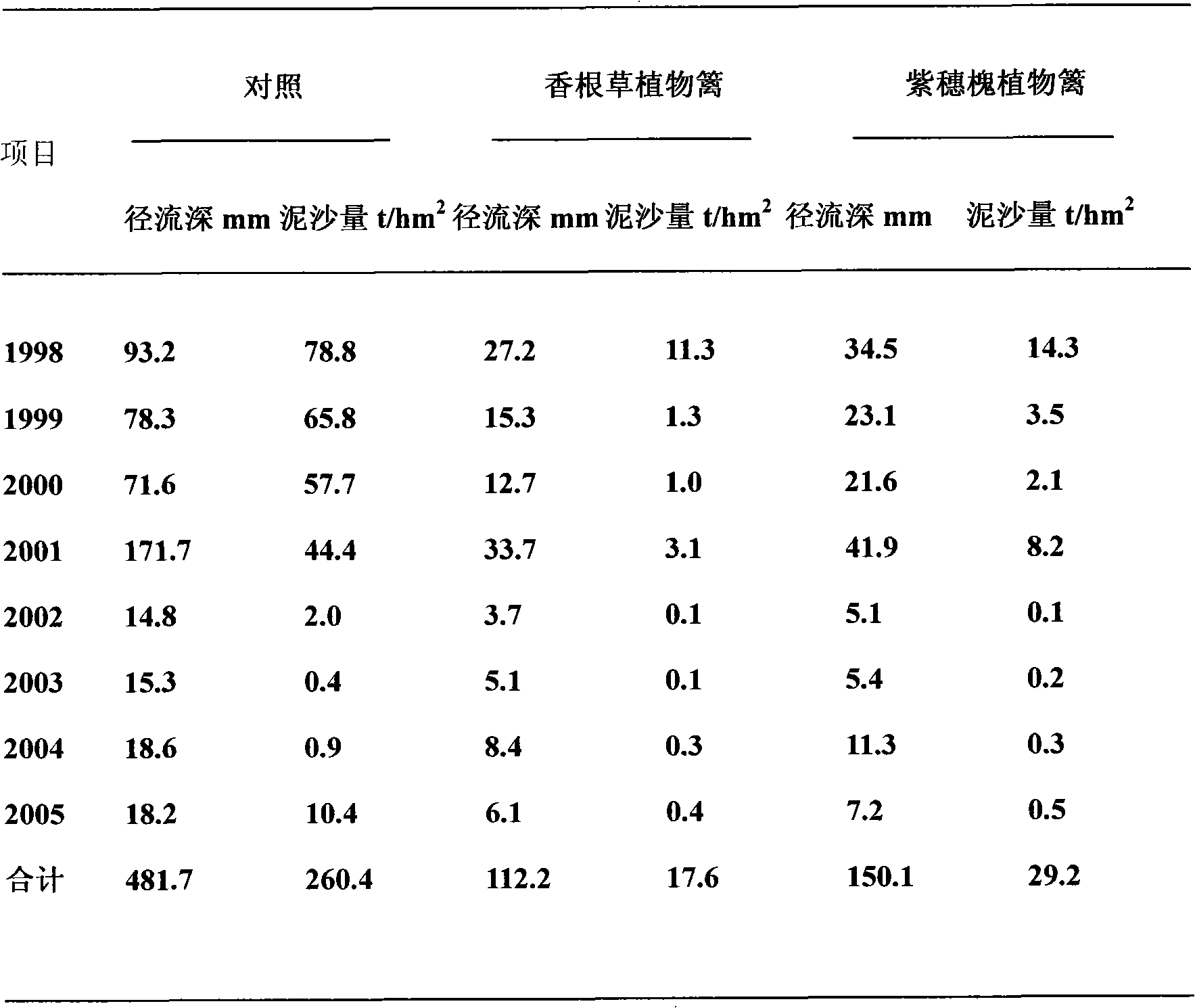Forage hedgerow soil conservation planting technology
A planting technology and hedgerow technology, applied in the field of soil-conserving planting, can solve the problems of imperfect technology, no or little consideration of the economic benefits of hedgerows, etc., to improve agricultural energy efficiency, reduce sediment loss and runoff, good effect
- Summary
- Abstract
- Description
- Claims
- Application Information
AI Technical Summary
Problems solved by technology
Method used
Image
Examples
Embodiment 1
[0032] Embodiment 1: forage hedgerow soil conservation planting technology, it comprises following process:
[0033] Plowing and soil preparation: Before transplanting or sowing the hedgerows, the soil of the hedgerows should be plowed. The plowing depth is 10cm, the width of the site preparation is 50cm, and the soil is fined. Calcium phosphate 40 kg;
[0034] Sowing and raising seedlings: alfalfa is sown by direct seeding, the amount of seeds per mu is 1.5 kg, when sowing, the seeds are mixed with the sediment at a ratio of 1:2.5, and evenly spread on the hedgerows, after sowing, water 3m per mu 3 , covering soil 0.5cm, the best sowing time is from September to October, no need to thin out seedlings after emergence, but pay attention to remove weeds before the plants completely cover the soil, mow once a year in mid-April and mid-October, and leave stubble when mowing 5cm;
[0035] Planting: Hedgerows with a slope of 9° have a spacing of 800cm, and two rows of alfalfa are ...
Embodiment 2
[0036] Embodiment 2: forage hedgerow soil conservation planting technology, it comprises following process:
[0037] Plowing and soil preparation: Before transplanting or sowing the hedgerows, the soil of the hedgerows needs to be plowed. The plowing depth is 15cm, and the width of the site preparation is 60cm. Calcium phosphate 50 kg;
[0038] Sowing and raising seedlings: alfalfa is sown by direct seeding, the amount of seeds per mu is 2.5 kg, when sowing, the seeds are mixed with the silt at a ratio of 1:2.5, and evenly spread on the hedgerows, after sowing, water 4m per mu 3 , covering soil 1cm, the best sowing time is from September to October, no need to thin the seedlings after emergence, but pay attention to remove weeds before the plants completely cover the soil, mow once a year in mid-April and mid-October, leave 6cm of stubble when mowing ;
[0039] Planting: 700cm between hedgerows at a slope of 10°, three rows of alfalfa are densely planted in bands at interval...
Embodiment 3
[0040] Embodiment 3: forage grass hedgerow soil conservation planting technology, it comprises following process:
[0041] Plowing and soil preparation: Before transplanting or sowing the hedgerows, the soil of the hedgerows needs to be plowed. The plowing depth is 14cm, the width of the site preparation is 57cm, and the soil is fined. Calcium phosphate 47 kg;
[0042] Sowing and raising seedlings: Vetiver is planted by transplanting seedlings. Two rows are planted for each hedgerow, with a row spacing of 45cm and a plant spacing of 20cm. One seedling is planted in each litter. From October to November, in the second year from February to March, the seedlings are replenished once according to the survival situation, and they are mowed once a year in October, leaving 40cm of stubble during mowing.
[0043] Planting: Slope 12° Hedgerow spacing 700cm, vetiver is densely planted in a belt every 900cm along the contour line, vetiver quickly forms hedgerows on the slope, terraced s...
PUM
 Login to View More
Login to View More Abstract
Description
Claims
Application Information
 Login to View More
Login to View More - R&D
- Intellectual Property
- Life Sciences
- Materials
- Tech Scout
- Unparalleled Data Quality
- Higher Quality Content
- 60% Fewer Hallucinations
Browse by: Latest US Patents, China's latest patents, Technical Efficacy Thesaurus, Application Domain, Technology Topic, Popular Technical Reports.
© 2025 PatSnap. All rights reserved.Legal|Privacy policy|Modern Slavery Act Transparency Statement|Sitemap|About US| Contact US: help@patsnap.com


